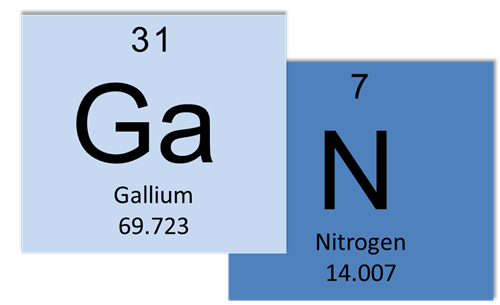Sandeep Bahl of Texas Instrument stresses the importance of making reliable GaN material will largely rely on joint efforts in the industry to establish related standards in this blog entry.
I often wonder why our industry doesn’t collaborate more to speed up the adoption of gallium nitride (GaN) transistors; after all, a rising tide lifts all boats. Each year, we’ve watched market forecasts getting pushed back. By working together, we can significantly increase the market penetration of this energy-efficient technology.
 |
|
Gallium and nitride from the element table. (All photos courtesy of Texas Instrument) |
If GaN wins, we all win. Increasing worldwide energy efficiency by just 1% could shutter about 45 coal power plants. We are already seeing the adoption of GaN in our everyday lives- something I did not fully grasp until a few months ago, when my daughter asked me what GaN looks like. I realized we have a few hundred pieces of GaN at home in our holiday lights: GaN LED’s.
A good collaboration topic is GaN reliability. Even though GaN transistors now pass traditional silicon qualification stress testing, or “qual,” adoption is still slow. That is because “qual” does not assure confidence of low customer returns, because it is silicon-based. While passing “qual” is a worthy manufacturing, quality and reliability milestone, it is not clear what it means for GaN transistors in terms of device lifetime, failure rates and application relevance. Developers have options, and even though silicon solutions are more bulky and wasteful of energy, they are nonetheless tried and tested.
For developers to adopt GaN, they need to be confident that the part will work robustly in the application for its intended lifetime. At TI, we have been thinking deeply about what this means, and it boils down to the two items represented in Figure 1. First, the traditional silicon methodology needs to be extended for GaN and its failure modes. Second, stress testing needs to include the switching conditions of power management, which traditional silicon qual doesn’t address.
 |
|
Figure 1: GaN qualification needs both an extension of existing silicon methodology and the addition of actual-use stress testing.
|
Standards are regarded as credible when an industry works together to develop them. Predictive reliability standards require a deep understanding of the technology; its failure modes; and knowledge of testing, qualification and product operation. The benefit of predictive standards is a significant acceleration in market adoption, and the first step is an awareness of existing deficiencies.
I have taken the first step by describing the issues in a white paper, “A comprehensive methodology to qualify the reliability of GaN products.” This paper generated discussions in the industry that drove us to continue the conversation by presenting an industry session paper at the Applied Power Electronics Conference (APEC) in March and by accepting an invitation from the IEEE International Reliability Physics Symposium (IRPS) technical committee to present in April. We expect the conversation to expand further into working groups and industrial collaboration as others also address this important topic.
TI is working toward a more energy-efficient future through reliable and dependable GaN products, bringing years of silicon manufacturing expertise and advanced device development talent to GaN. TI has leveraged our existing manufacturing infrastructure and capabilities to qualify our 600V GaN process. Our devices are tested using GaN-specific test methods that go beyond traditional silicon qualification practices to ensure reliability and robustness.
With qualified devices, power designers can realize the full power of GaN, break down barriers for market adoption, and above all else, realize the potential to live in a more energy-efficient world.













